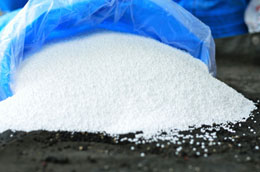 Nitrogen is a colorless, odorless, and tasteless chemical element, which is found in abundance on the Earth; constituting 78 percent of the planet’s atmosphere. Though it is available in abundance, much of it is of no use. Since its discovery by Scottish physician, Daniel Rutherford in 1772, nitrogen has come a long way to become one of the most important elements for humans, plants, and animals alike, and the credit for this―to a large extent―goes to its properties and uses.
Nitrogen is a colorless, odorless, and tasteless chemical element, which is found in abundance on the Earth; constituting 78 percent of the planet’s atmosphere. Though it is available in abundance, much of it is of no use. Since its discovery by Scottish physician, Daniel Rutherford in 1772, nitrogen has come a long way to become one of the most important elements for humans, plants, and animals alike, and the credit for this―to a large extent―goes to its properties and uses.
Nitrogen PropertiesNitrogen, with 5 electrons in the outer shell, is trivalent in most of the compounds. The vapor density of nitrogen is 14.4, which is slightly less than the vapor density of air at 14. Simply put, nitrogen is slightly lighter than air. It is highly soluble in water. A liter of water has the capacity to dissolve approximately 22 ml of nitrogen at a temperature of 0 °C. In its cooled and compressed form, nitrogen tends to liquefy into a colorless liquid, boiling at −196 °C. If cooled further, it tends to freeze and take a white snow-like appearance which melts at −210 °C.
Nitrogen Uses in Day-to-day Life
Nitrogen is present in all living organisms to some extent. Although we are not aware of it, we do use nitrogen in our day-to-day life―directly as well as directly. The uses of nitrogen are not restricted to biological processes in living organisms. It’s also used in the industrial sector. The process by which nitrogen goes through several transformations in the atmosphere is referred to as the nitrogen cycle.
Human Body
Nitrogen plays an important role in food digestion. Although, plenty of nitrogen is available in the atmosphere, it’s literally of no use for us and hence, we are left with no option, but to derive it from our food sources. Nitrogen compounds are basically building blocks which help in the growth of our body. In living organisms, nitrogen constitutes approximately 3 percent of the total body mass. When we eat food, nitrogen from that food is absorbed by the body in order to facilitate body growth. This element is especially important during pregnancy, when the fetus grows within the woman’s body.
Plants
Nitrogen plays an important role in various functions necessary for plant life. It is found in several parts of plants, ranging from roots to leaves and grains. It constitutes around 4 percent of total body mass of plants. It’s a crucial constituent of chlorophyll which helps in converting sunlight into required energy. As in case of humans, nitrogen compounds act as building blocks in plants as well. The nitrogen found in proteins and enzymes in the roots of the plant helps it absorb water and various nutrients.
Industry
Owing to its properties, nitrogen is considered one of the most important industrial gases in several industries. It is either produced by fractional distillation of liquid air, or mechanical treatment of gaseous air. Commercial nitrogen is provided in its compressed form which is stored in cylinders. Nitrogen gas has plenty of uses in the industrial sector. It is used as an inexpensive alternative to argon in incandescent light bulbs. It is also used in manufacturing stainless steel. In the electronic sector, it is used to make diodes and integrated circuits. Its use in fuel systems of military aircraft reduces the possibility of a fire. Owing to its inertness and lack of moisture, it is also used in automobile and aircraft tires.
Although it’s one of the most abundant elements in the atmosphere, nitrogen―in its crude form―is of no use for humans or plants. The various uses credited to this element come only after it is treated, when it becomes one of the most useful elements for many biological as well as industrial processes.











RSS